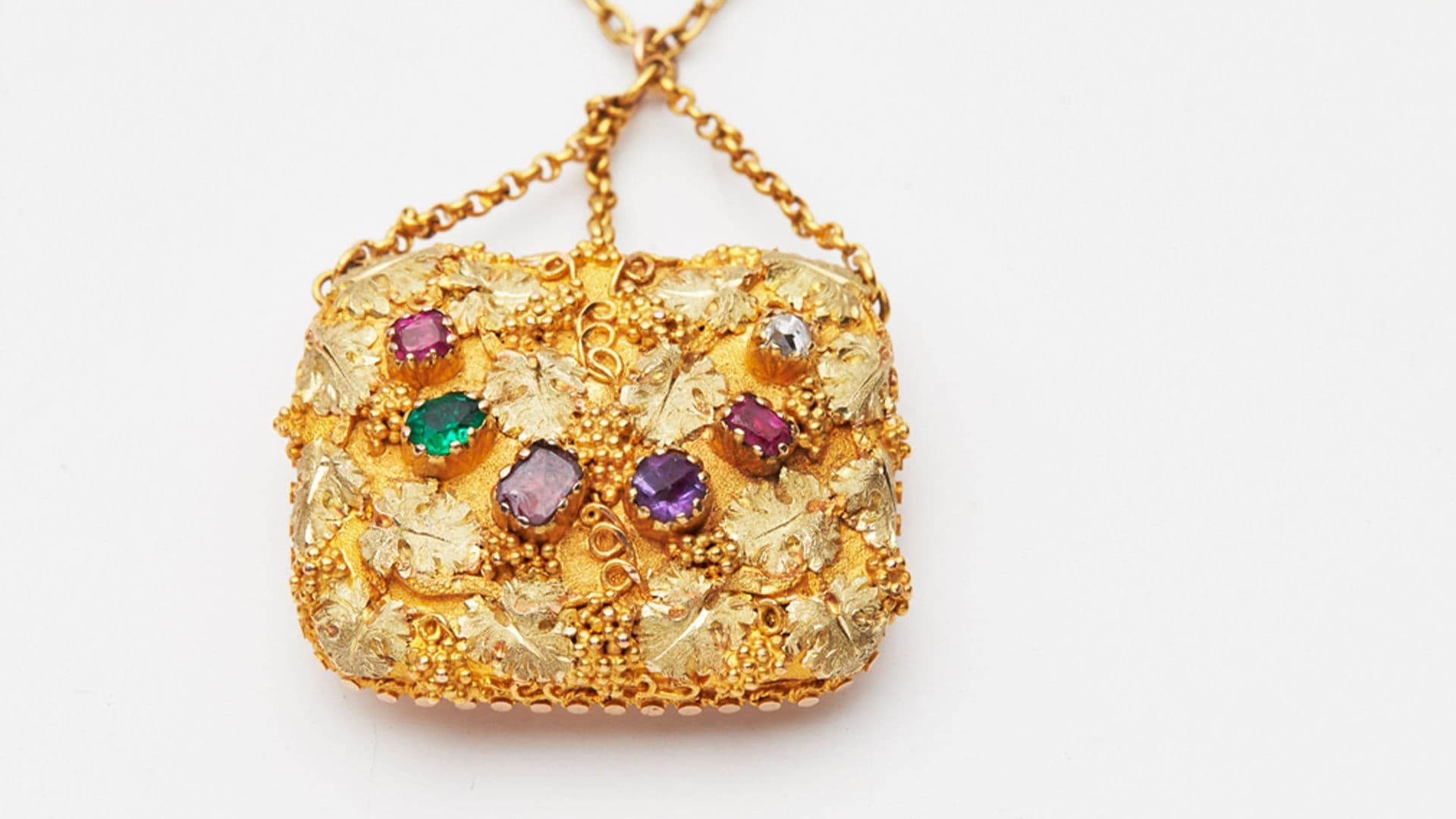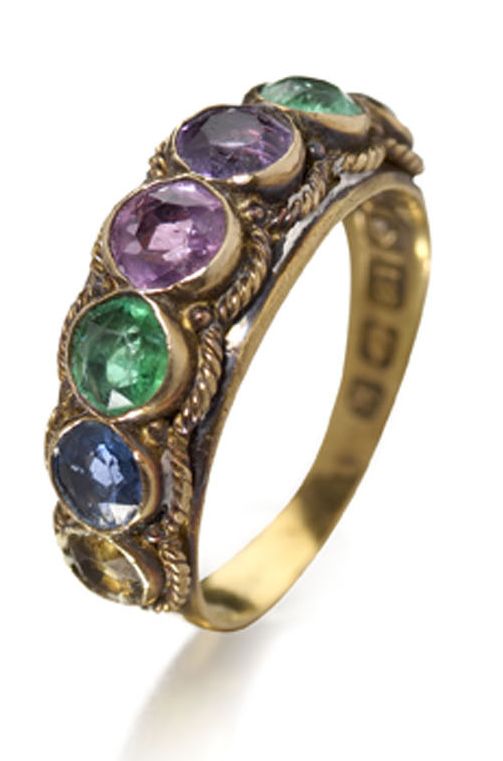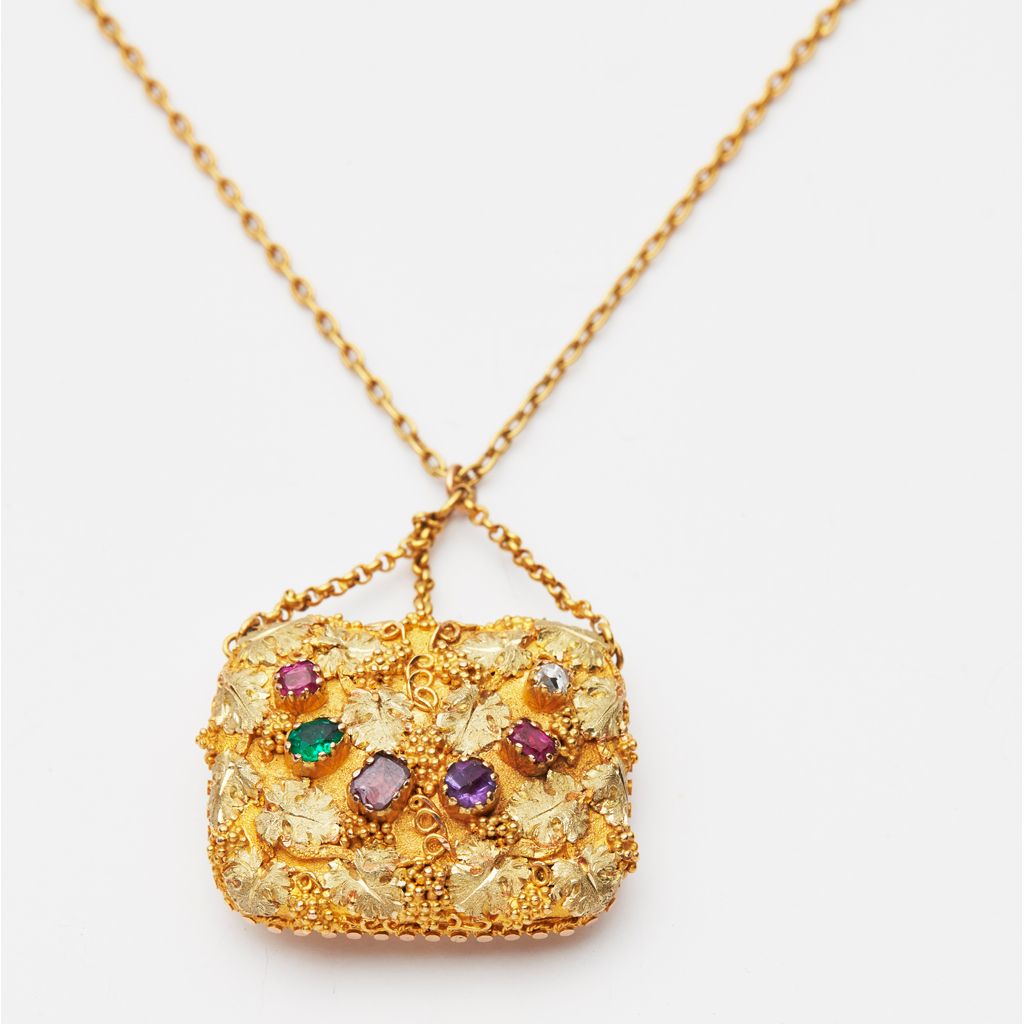Hidden Messages in Jewellery
Since its first conception tens of thousands of years ago, jewellery was designed to relay a message. Acrostic jewels play their own special part in this story.

20 February 2017
Ruth Davis
Since its first conception tens of thousands of years ago, jewellery was designed to relay a message. Acrostic jewels play their own special part in this story.
Since its first conception tens of thousands of years ago, jewellery was designed to relay a message. That might be to indicate the social or religious status of the wearer, their political or personal alignments, or more recently to paint a picture of an individual’s personality. Once for the rich or social elite, as materials became more abundant and social status more fluid, the messages and meanings revealed, or even just insinuated, by a piece of jewellery has expanded.

Acrostic jewels play their own special part in this story. These are jewels which use the first initial of a gem stone is used to spell out a particular word or sentiment (A for amethyst, B for Beryl, C for citrine, D for diamond, E for Emerald etc.). Traditionally words such as ‘Regard’ (Ruby, Emerald, Garnet, Amethyst, Ruby, Diamond) and ‘Dearest’ (Diamond, Emerald, Amethyst, Ruby, Emerald, Sapphire, Turquoise) were most popular, but they were also deployed to spell out initials and names or even indicate important dates.
It is believed the notion of acrostic jewels began in the later 18th century with Jean-Baptiste Mellerio, at his Persian atelier Mellerio dits Meller. A favourite of Marie Antionette, Mellerio was jeweller to the French court, and began with jewels spelling out ‘J’adore’. Napoleon Bonaparte became a fan of the style and had numerous pieces commissioned for both Empress Josephine and his second wife Empress Marie Louise. For Josephine he commissioned bracelets from Chaumet, spelling out the names of her children Eugene and Hortense. While for Marie Louse, a set of bracelets spelling out their own names and birthdays, as well as the dates of their meeting and marriage in 1810.
The style really came to the fore in the Victorian period, famous for their sentimentalism they took up the notion and ran with it, enjoying the secretive and romantic nature of the jewels.

When looking for acrostic jewels in your own collection or pieces you come across, there are a few things to keep in mind. Is the piece set with an unusual array of gemstones, for example? Often jewellers restrict their pallet to two or three colours; so several principal stones in a single piece, all of a different colour, could mean that there is a hidden message in the jewel. In antique pieces, it is also important to remember that historically gemstones may have been known by different names, for example certain varieties of garnet were called Verneuil (solving the rather inconvenient problem of trying to spell our ‘Love’ in a gemstone); and while many of these pieces were made in Britain, many were also made in France, and so the French terms would apply.
It’s a fantastic opportunity to play detective in your own jewellery box, and remember just because a jewel doesn’t always spell out a particular word or sentiment, does not mean that the use of a particular gemstone doesn’t have a symbolic meaning. For example emeralds were thought to help the wearer foresee future events, a potent of truth it was thought to protect the wearer from cheats or magicians. The word ‘diamond’ comes from the Greek adamas, meaning invincible or indestructible; this may be a symbol of undying love or an unconquerable strength in battle and other endeavours. And if you really want to go down the rabbit hole, the symbolic language of flowers can shine a whole new light on the meaning of a jewel, enjoy!